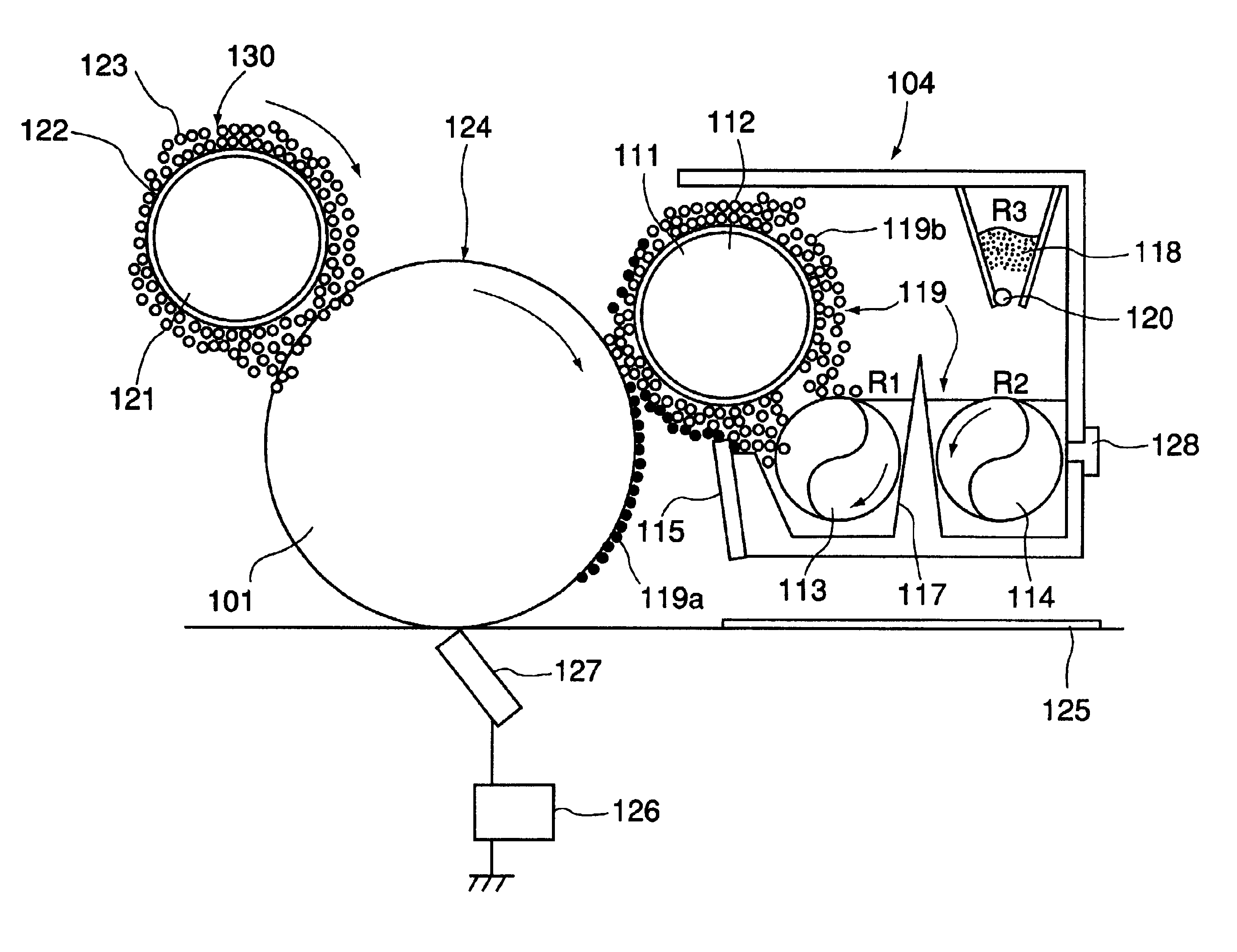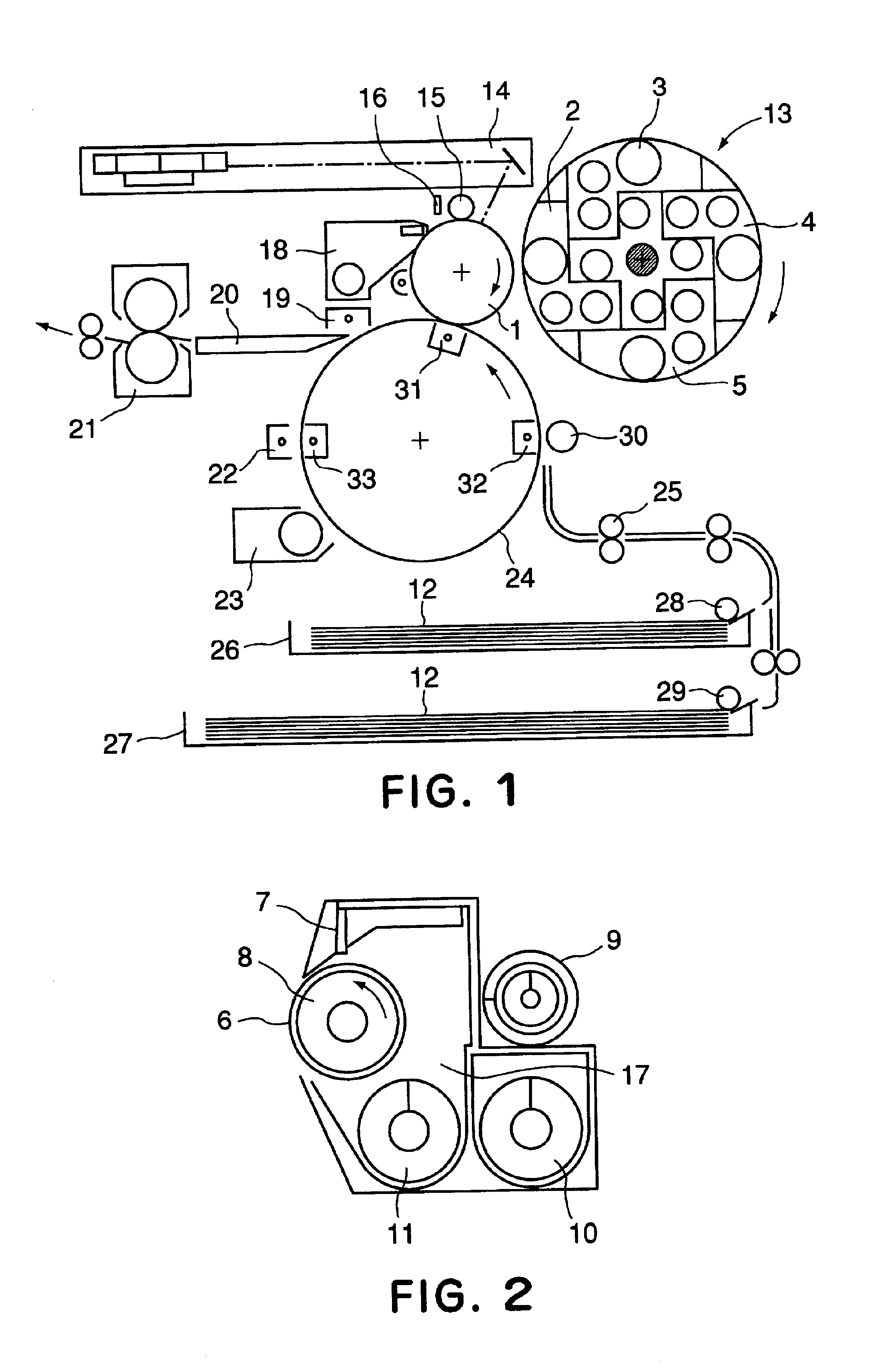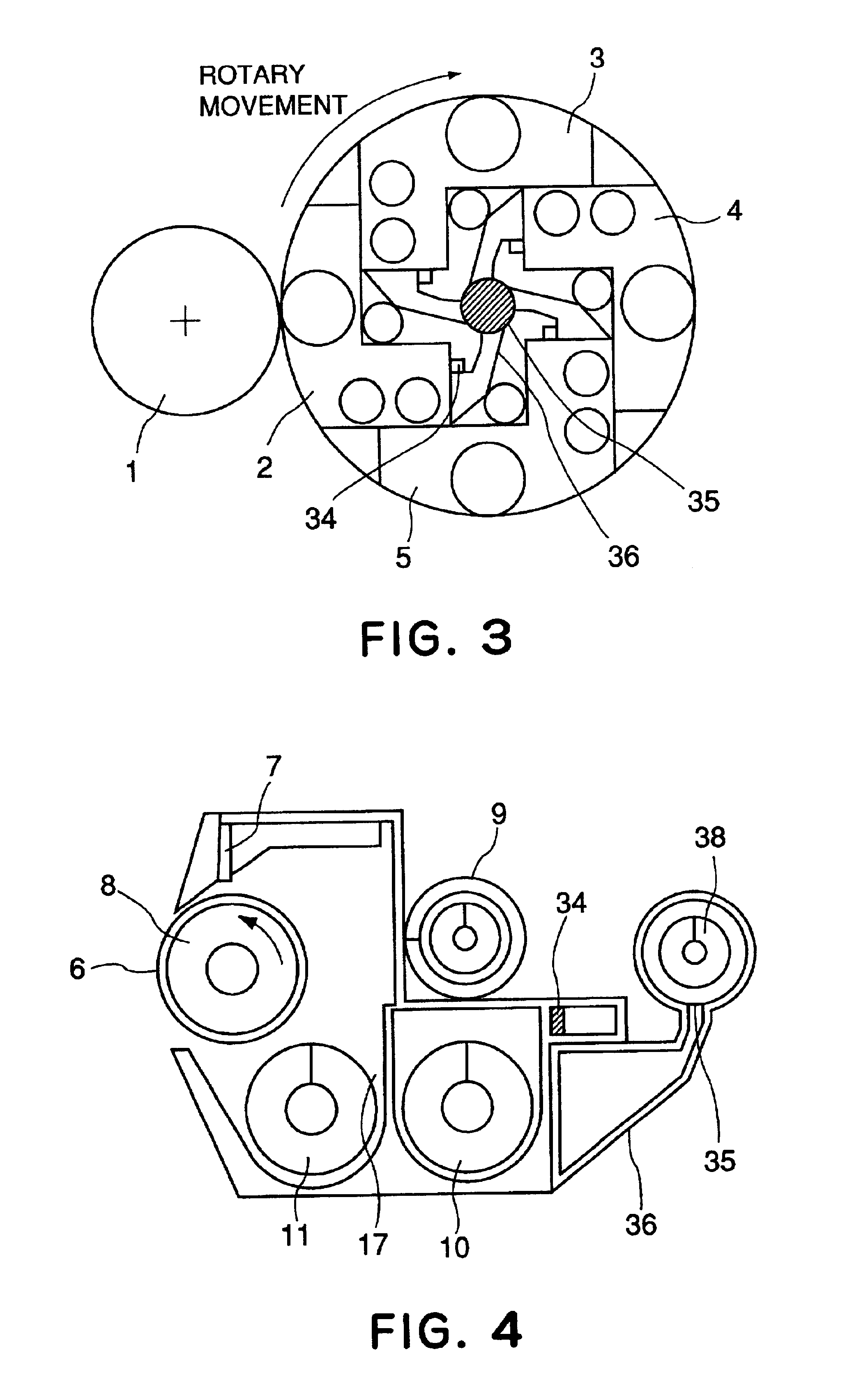Replenishing developer and developing method
a developer and developing method technology, applied in the field of revlenishing developer and developing method, can solve the problems of large stress on the carrier of the developer vessel, accelerated image deterioration, and change in image density or fog, and achieve the effect of stable image formation and stable image formation
- Summary
- Abstract
- Description
- Claims
- Application Information
AI Technical Summary
Benefits of technology
Problems solved by technology
Method used
Image
Examples
examples
[0251]Hereinbelow, the present invention will be described more specifically based on Examples, which however should not be construed to restrict the scope of the present invention.
Production of Toners
[0252]Into 710 wt. parts of deionized water, 450 wt. parts of 0.1 mol / l-Na3PO4 aqueous solution was added, and after being heated to 60° C., the system was stirred at 13000 rpm by a high-speed stirrer (“TK-Homomixer”, made by Tokushu Kika Kogyo K.K.). Then, 68 wt. parts of 1ml / 1-CaCl2 aqueous solution was gradually added thereto to form an aqueous medium of pH 6 containing calcium phosphate.
[0253]On the other hand, the following ingredients:
[0254]
Styrene166wt. partsn-Butyl acrylate34wt. partsCopper phthalocyanine pigment10wt. partsDi-t-butylsalicylic acid Al compound1.5wt. partsAmorphous polyester10wt. partsMonoester wax20wt. parts(Mw = 500, Mn = 400, Mw / Mn = 1.25)
were sufficiently dispersed by means of a media dispersing machine at room temperature. After being separated from the dis...
example a-1
[0292]The above-prepared Magnetic carrier A-1 in 92 wt. parts and Cyan toner A-1 in 8 wt. parts were blended in a V-shaped blender to prepare Starting Cyan developer A-1.
[0293]On the other hand, Magnetic carrier A-1 and Cyan toner A-1 were blended in a weight ratio of 1:19 to provide Replenishing Cyan developer A-1.
[0294]A commercially available copying machine (“GP55”, made by Canon K.K.) was re-modeled as follows to provide a test copying machine. More specifically, the developing apparatus was re-modeled into a form described with reference to FIGS. 3 and 4 including a developing sleeve having a surface roughness Rz=12.1 μm formed by sand-blasting a 16 mm-dia. SUS sleeve.
[0295]The charging member was re-modeled into a magnetic brush charger (130) as illustrated in FIG. 5 comprising Charger magnetic particles a (123) prepared above so that the magnetic brush charge was rotated at a speed of 100% relative to that of and in a direction opposite to the photosensitive member at an abu...
example a-2
[0322]The preparation of developers and evaluation were performed in the same manner as in Example 1 except for using Cyan toner A-6 instead of Cyan toner A-1.
[0323]As shown in Table 1, image forming performances were somewhat lowered with a practically acceptable degree in the H / H environment. This may be attributable to a lowering in transferability due to somewhat lower sphericity of the toner.
PUM
 Login to View More
Login to View More Abstract
Description
Claims
Application Information
 Login to View More
Login to View More - R&D
- Intellectual Property
- Life Sciences
- Materials
- Tech Scout
- Unparalleled Data Quality
- Higher Quality Content
- 60% Fewer Hallucinations
Browse by: Latest US Patents, China's latest patents, Technical Efficacy Thesaurus, Application Domain, Technology Topic, Popular Technical Reports.
© 2025 PatSnap. All rights reserved.Legal|Privacy policy|Modern Slavery Act Transparency Statement|Sitemap|About US| Contact US: help@patsnap.com



